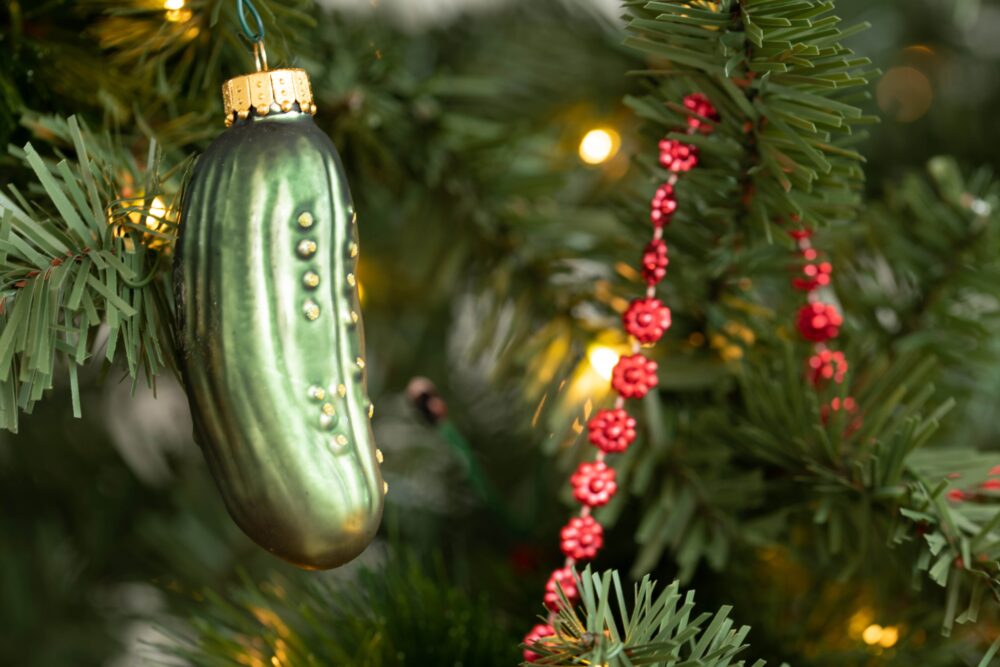Guide: 5 lost European holiday traditions ready for rediscovery
In Europe, the trees are bare. The wind, colder and perhaps carrying a touch of rain, rustles the branches and emits a soothing woosh. As autumn turns to winter, we start looking toward Christmas! Ah, Christmas in Europe: sparkling lights, hot wine, wet cobblestones, rich sauces poured generously over root veggies and juicy meats. Perhaps the distant jingling of silver bells might pique your interest. But if you’ve ever stopped to say: Europe has thousands of years of history. What are the Christmas traditions we’ve lost in our new global world? An excellent question! We have answers. Here are five ways Europeans used to celebrate the winter holiday (and, of course, ways you can still get a taste of this sumptuous past!).
The witch of Italy
Long before a portly Santa boarded his sleigh to deliver colorful gifts to merry children, it was an Italian witch who made the house calls. La Befana, as she was known, wore long hair and a black pointed hat and darted across the sky on a wooden broomstick. According to legend, when the three wise men trekked toward a newly born Jesus, they invited La Befana to come along. Though she refused initially, she changed her mind and trailed after them. Though she searched, she never managed to catch up—or to bring gifts to Jesus. Instead, she gave presents to children along the way. Traditionally, La Befana visits Italian homes on January 6th, the Epiphany, the day when, according to Biblical storytelling, the wise men arrived in Bethlehem. If you’re in Italy this January 6, point your eyes skyward to spot the old witch as she zooms through the clouds!

Nautical decorations in Greece
The sea flows in the veins of the Greeks. It’s no surprise, then, that one of their lost Christmas ceremonies deals with a boat. For centuries, the karavaki, or Christmas boat, took the place of a tree. Instead of putting decorations (and, in later years, lights) on a fragrant fir, Greeks adorned their vessels. Some say the karavaki comes from a wish among families to keep their fishermen, husbands, and sons safe on uncertain waters. Others say it was meant to pay homage to Saint Nicholas. Either way, it’s a unique means to celebrate the end of the year. Though the karavaki has grown rare in recent years, it’s making a comeback! If you’re lucky and get to spend the holidays in Greece this year, seek one out. We promise tall masts and huge sails covered in sparkling lights are a sight to behold!

Spain’s young singers
Each December 16th in medieval Spain, food such as chestnuts was collected house by house and auctioned. The proceeds went to the church to help lessen the cost of holiday services. In the centuries since, what became known as the Fiesta de Aguinaldos persisted, yet with one major change: instead of adults collecting nuts to support the church, children went door to door to sing in exchange for a little pocket money. In recent decades, however, wandering musical children has become less and less common. Yet you may get lucky and experience this ancient ritual if you spend early January in a small Spanish village. In the countryside, the old ways still reign. What better way to connect deeply with a new culture than to understand its past? Just make sure you have some coins to hand over!
A stinky tree surprise in Germany
The humble pickled cucumber. You’d be challenged to find anyone who associates this fermented vegetable with holiday spirit. Yet once, not too long ago in Germany, there was a wonderful celebration that involved three simple things: a pickle, a Christmas tree, and a knack for hiding things. This is how it worked: an adult would take the cucumber and conceal it somewhere in the decorated tree. Once hidden, the children of the household would compete to be the first ones to spot it. The prize? A bar of chocolate or a small toy. In most modern German homes, you will not find a pickle nestled in the branches of the sparkling Douglas fir. But if you find yourself somewhere in this country on December 25th, bring this tradition back to life! We promise you this: it will add laughter to the house!

Yuletide in Finnish steam
What could be better than this: it’s snowing outside, the silent flakes falling to build a perfect coating on the ground. Though the temperatures are frosty, you’re with your family taking the moist steam of a Finnish sauna. Did you know that this is what Finns traditionally do during Christmas? Believing that hot steam draws out toxins from the body, Finns gather in their saunas on Christmas Eve. To make it even more festive, they drizzle scented oils on the coals, hang lanterns that glow warmly, and keep crisp, ironed towels ready at hand. Some families will even leave treats for saunatonttu, the sometimes mischievous sauna elf. Out of all the five, Christmas sauna might be most alive today, though it’s much less common than it was in decades past.

So there you have it! Did we miss any European Christmas traditions you know about? If so, we’d love to hear more. Drop us a line on social media and add a picture if you have one. A bit of advice: if you hope to experience the things mentioned above, do some research in advance. Given that all of them have in some way been lost to history means that a bit of planning is necessary. Our best tip: seek out the small towns and villages that still do things in the old way. You’ll be delighted to find all sorts of old-world things in rural Europe! Cheers to a wonderful holiday season.